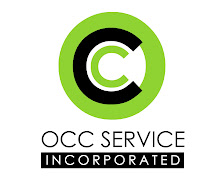If you are in the IT world, you must be as sick of these stories as we are. Cloud Computing Set to Change Everything et al. As ubiquitous as these proclamations have become, the excitement has some real justification. Let’s take a look at what the cloud means to you, us, and our city.
The cloud is by definition, nebulous. Ask 50 people what it is, and you will get 50 different answers. 49 of them will be correct. Generally, the cloud is an effort to distribute resources in order to gain efficiency. Any strategy falling under this generality may be called a cloud solution. Specifically (and in plain English), cloud solutions most often means taking computer power out of homes, offices, and pockets, and putting it all in massive data centers that benefit from multiple dimensions of scale. Faster internet connections, better IT oversight, efficient use of hardware, and above all, lower costs per unit. Of course most of us have used cloud resources for years. Hotmail, Gmail, IM, even the most of the internet itself have always been cloud services. The real trend here is that what used to be done on your home pc, taxing rarely used but expensive processors, can now be done online. Your home computer might eventually be nothing more than a web browser, all of your applications may exist online.
Who is likely to benefit from such a change? In a word, Google. Yes, obviously Amazon is likely to see the most direct benefit, as they operate the largest cloud offering to date (AWS), but Google’s business model is absolutely predicated on growth of web-based services. Small business will be a close second. Scale does get you lower cost in the cloud, but the savings are much lower than you might expect. Most cloud services have pay as you go models, dramatically reducing barrier of entry by virtually eliminating large initial investments. Who is likely to suffer from such a change? Well, anyone selling products. Microsoft is way behind the curve with its existing licensing model. PC manufacturers are likely to see stagnation too in the absence of yet unimagined innovation. After all, if you need less processing power and storage space than you did the year before, why would you need a faster computer?
What does this mean for the world of IT consultants such as our firm? It’s without saying that it will have a major impact on the direction of the field. We have placed our bet on integration services and system wide design and security. There will be many years until that day as many integral services are still without a practical cloud based solution. Domain services are utterly impractical to elevate to the cloud just yet, as are most services that benefit from speedy transactions. As bandwidth improves (and gets cheaper) more of these dominoes will fall. Many clients have reported to us that they have security concerns about moving services to some out-of-sight data center. Breaches in security on cloud services have been well publicized, but when compared to the horrifying record of small business security, they seem nearly impenetrable.
What does this mean for Austin? As a city identified with IT innovation, we have been successful in growing cloud services as part of our technology sector. UT just this month announced it would partner with SunGard Availability Services in order to create an Exabyte-scale data center on campus. The research implications of such an investment might be similar to that of SEMATECH, the semiconductor consortium instituted in 1986. Inevitably, technology changes in unforeseen ways, and cities grow and shrink on unpredictable, or unpredicted trends. With this drought expected to continue for a decade, here is to hoping that Austin might benefit from the clouds on the horizon.
Ted Hughes
Managing Director
OCC Service Incorporated
tedhughes@occaustin.com
Ted Hughes
Managing Director
OCC Service Incorporated
tedhughes@occaustin.com

